Analysis - Part 1 - 05/15/2014
Strange times indeed. I ended up relocating 3000 miles away to a much greener environment, and one that doesn't have anywhere near as many people in it. The company that hired me initially said they would ship 2 cars, but then they surprised me with an arbitrary "too old!" statement and I had to have the red car shipped. No biggie, but this meant it arrived to my new house much faster than the rest of my stuff and tools. No worries, I've got plenty of things "wrong" with this car that need to be fixed to keep me busy.
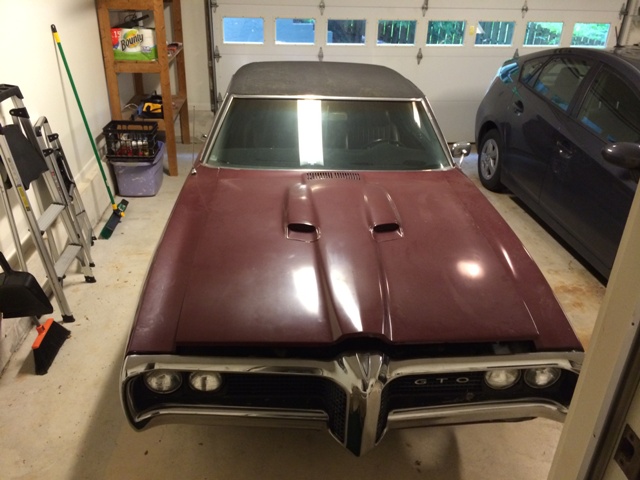
Resting in its own little bay in the garage. Two cars in the bay and room to work? Yes please!
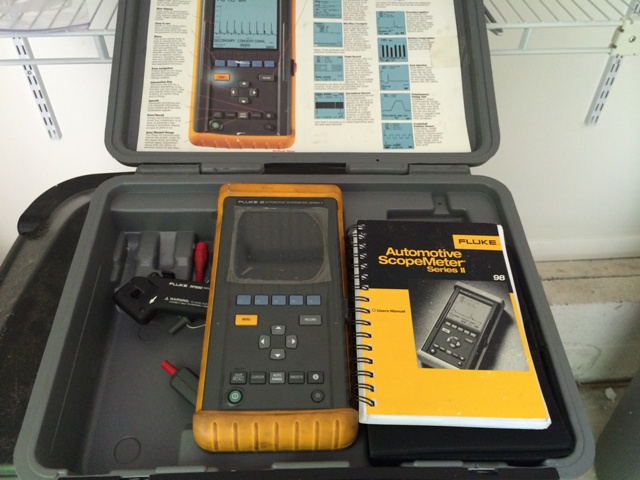
My friend Steve managed to score me a great deal on a new toy: a Fluke 98 Automotive Scopemeter! These things go for between $950 and $1300 still, and I didn't pay anywhere near that. Friends in the right place at the right time make all the difference.
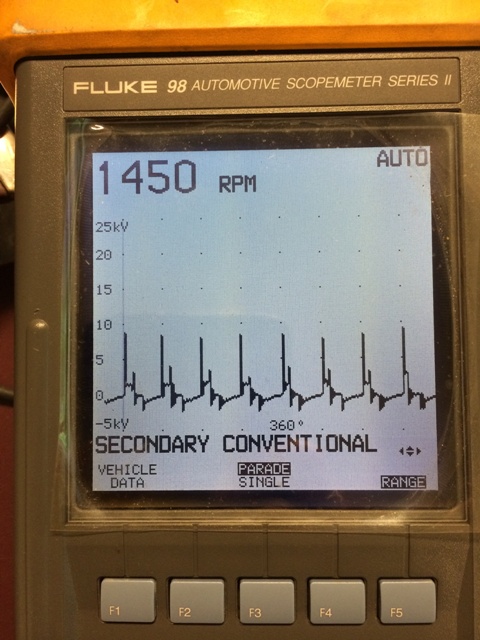
First problem: the car won't idle right. It's way too high and dribbling fuel down the primaries like it's going out of style. Hard to tune and adjust or even take it for a drive...
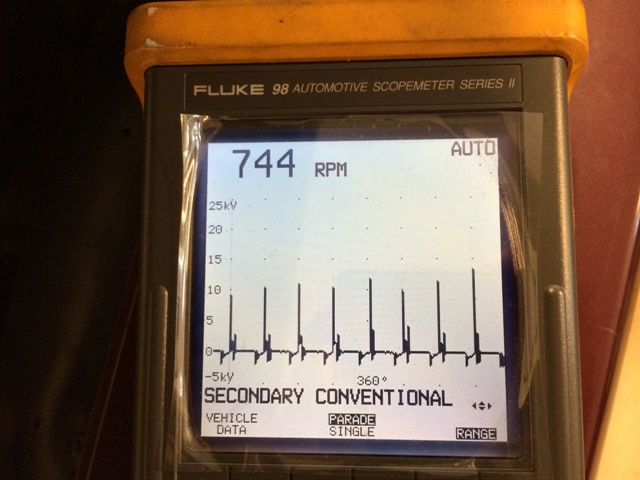
Much better! Turns out a combination of the choke linkage and old carb base gasket kept the choke partially opened. A little "encouragement" and some "adjustments" fixed this and now the car idles great. It no longer smokes or gasses you out of the garage.
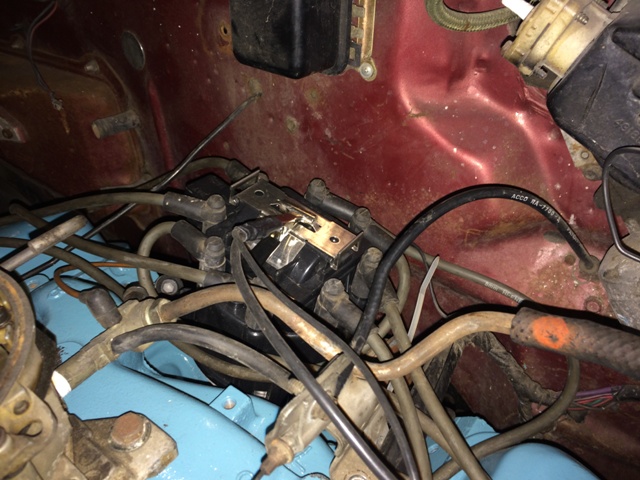
I can look at the coil voltage now: a metal cover over the coil induces a voltage and the probe picks it up. So now I can look at the voltage waveforms of the secondary without zapping myself. The scope shows only 10-12kV, I'm not sure if that's correct and there are plenty of things to look at (like if the HEI is receiving full 12V vs. 9.5V).
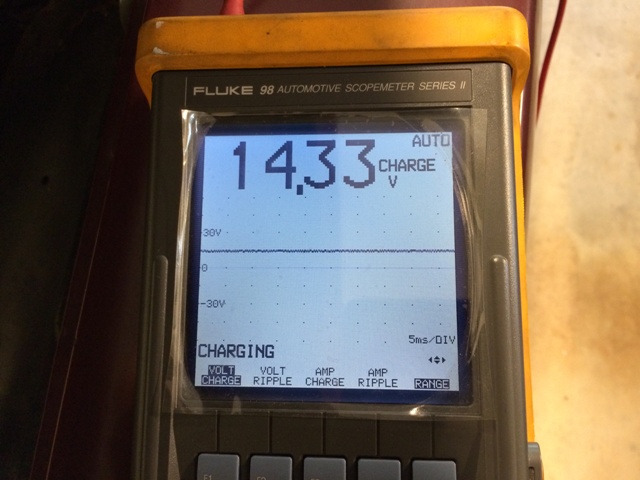
The battery was dead when the shipper got it to me, so I needed to check and verify that something isn't wrong with the alternator. As the scope reveals, at idle it is charging to 14.33V, which is pretty much what they were designed to do.
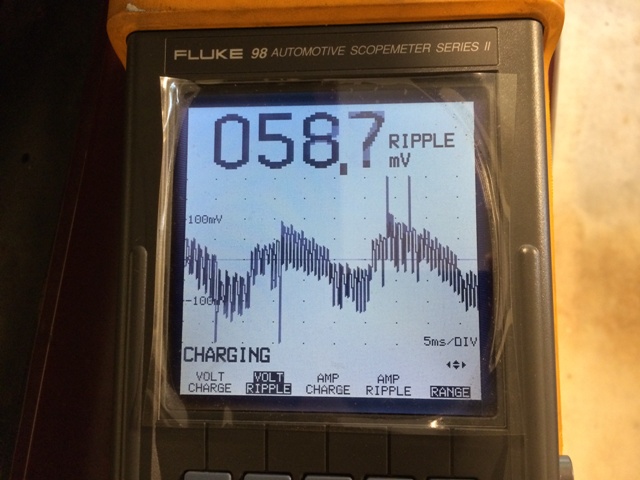
Ripple of only 59mV, which is really good and indicates no bad diodes in the alternator. Chalk it up to "good."
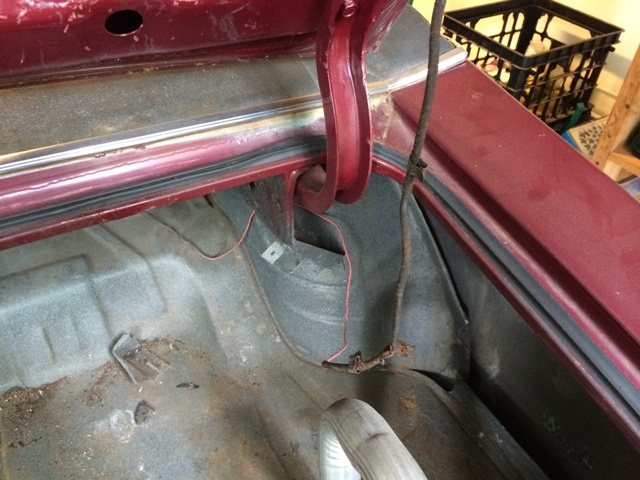
The tail lights and stop lights fuses still blow though, so it's time to investigate the trunk so I can get the electrical fixed and be somewhat remotely safe to drive. I see this pink wire coming into the trunk from a spot over on the passenger side. I have NO idea what it's there for.
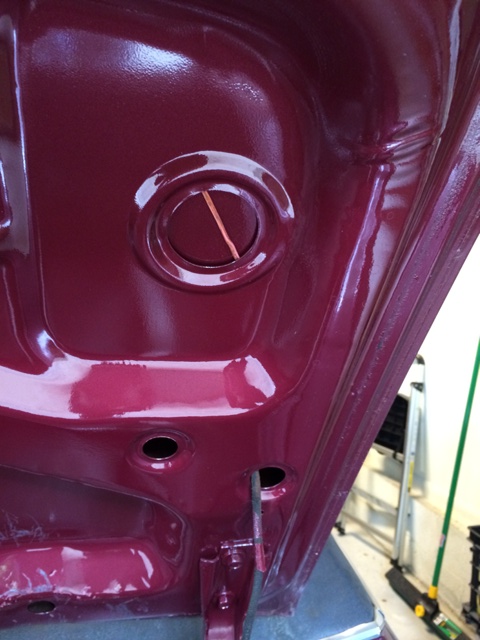
And it's stuck here. More investigation will be needed.
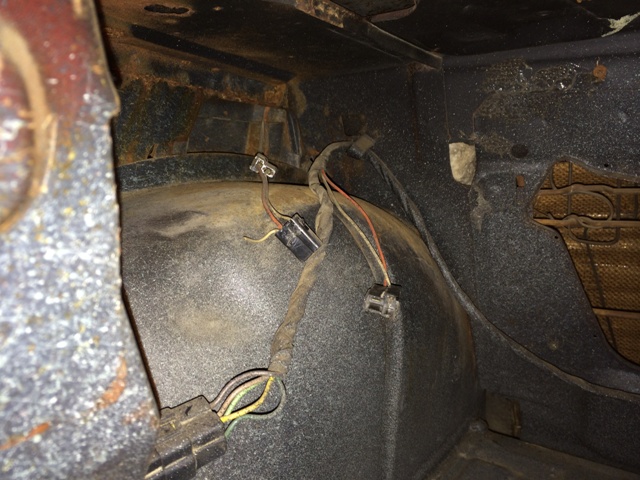
Tail light harness and orange\white wires come out here too. I unplugged all of the the harnesses here to rule them out. I also ohmed out the gas tank sending unit: it measures 6.5MegOhms, so either the sending unit is toast or the ground for it is missing.
So a little minor tuning and the engine is running great for now. Still need to get a set of gauges in it. Testing of the fuses reveals that with everything hooked up once you press the brake pedal it blows the fuse after a few seconds. The turn signals are the same way, they click rapidly, then not rapidly, then one side goes out, then the fuse blows. Removing the rear tail light harness from the equation yields no more stop lights blowing the fuse - so the stop switch itself isn't the likely culprit. But then when you turn the hazards on, they blow in about 3 seconds. So something in these circuits that ISN'T in the trunk is causing the fuses to blow in a little bit. Looking at the schematic, all 3 run through the turn signal switch in the steering column. Considering some idiot took it apart and screwed it up, I wouldn't be surprised if there are damaged wires or a bad turn signal switch inside. Might just be a good time to get a tilt steering wheel - rebuilt ones only go for $399...
Return to 1969 Lemans
Last updated May 15th, 2014